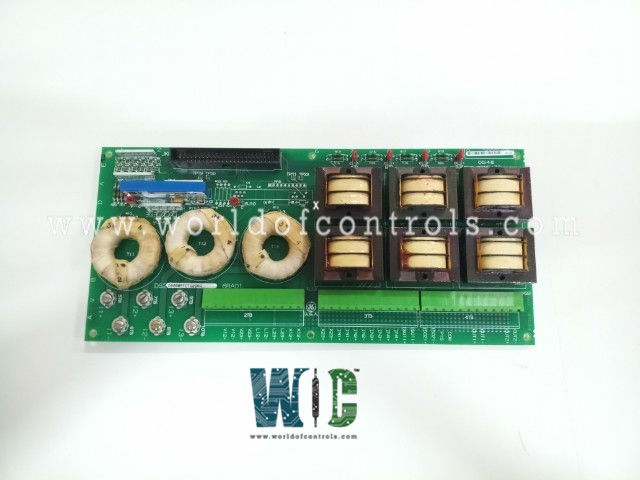
World Of Controls understands the criticality of your requirement and works towards reducing the lead time as much as possible.
DS200PTCTG2BAA - PT and CT Signal Conditioner Board is available in stock which ships the same day.
DS200PTCTG2BAA - PT and CT Signal Conditioner Board comes in UNUSED as well as REBUILT condition.
To avail our best deals for DS200PTCTG2BAA - PT and CT Signal Conditioner Board, contact us and we will get back to you within 24 hours.
SPECIFICATIONS:
Part Number: DS200PTCTG2BAA
Manufacturer: General Electric
Series: Mark V
Product Type: PT and CT Signal Conditioner Board
Power Requirements: +5 V dc, 6 A
Input Voltage: 120V AC
Number of relay channels: 12
Power supply voltage: 24 V dc
Power System Frequency: 60Hz
Mounting: DIN-rail mounting
Technology: Surface mount
Operating temperature: -30 to +65°C
Size: 15.9 cm high x 17.8 cm
Repair: 3-7 Day
Availability: In Stock
Country of Origin: United States
FUNCTIONAL DESCRIPTION:
DS200PTCTG2BAA is a PT and CT Signal Conditioner Board manufactured and designed by General Electric as part of the Mark V Series used in GE Speedtronic Control Systems. PT (Potential Transformer) and CT (Current Transformer) Signal Conditioner Boards are integral to modern control systems, ensuring accurate, reliable, and safe monitoring and control of electrical parameters. These boards process and condition signals from PTs and CTs, making them essential for various applications in power generation, industrial automation, and more. Here’s how they enhance control systems:
KEY FEATURES:
Accurate Measurement and Monitoring:
Signal Isolation and Safety:
Noise Reduction and Signal Clarity:
Data Integration and Processing:
Enhanced System Performance:
Versatility and Flexibility:
Wide Application Range: PT and CT Signal Conditioner Boards are suitable for various applications, including power system monitoring, protective relays, energy management systems, and industrial automation.
WOC maintains the largest inventory of Replacement Parts for GE Speedtronic Gas Turbine Control systems. Additionally, we offer warranty-backed unused and rebuilt boards as well as board repairs for your damaged ones. Our team of professionals is available around the clock for your OEM needs. We at WOC are happy to help you with any needs you may have in terms of automation. Please get in touch with our team by phone or email for pricing and availability on any components and repairs.
How is the signal conditioner board powered?
The board is usually powered by a stable power supply, often 24V DC from the control system.
What is the typical frequency range for the board?
The board is designed for power system frequencies of 50Hz or 60Hz, matching standard power grid frequencies.
What types of outputs does the signal conditioner board provide?
The board typically provides standard outputs such as 0-5V or 4-20mA, suitable for various monitoring and control devices.